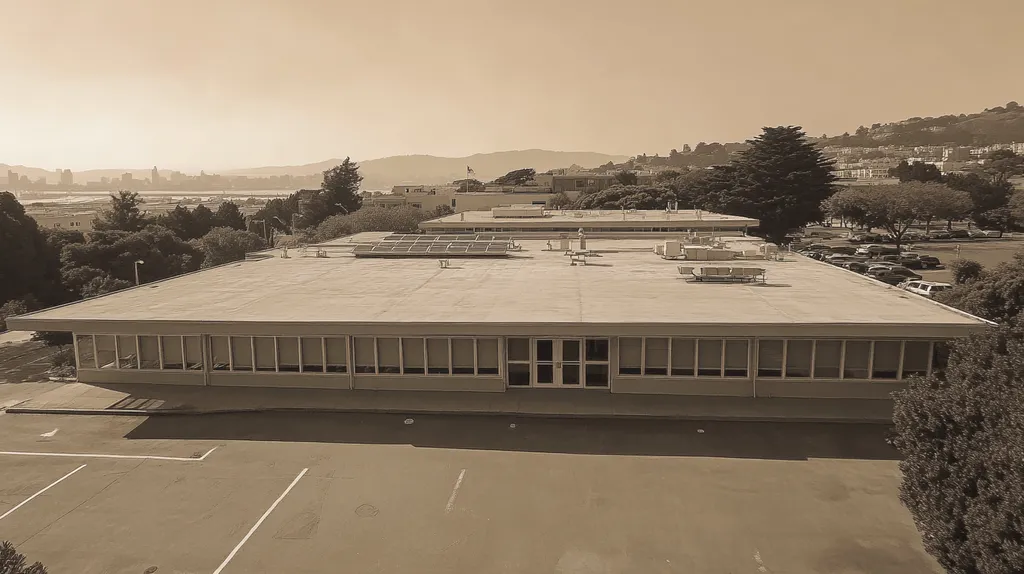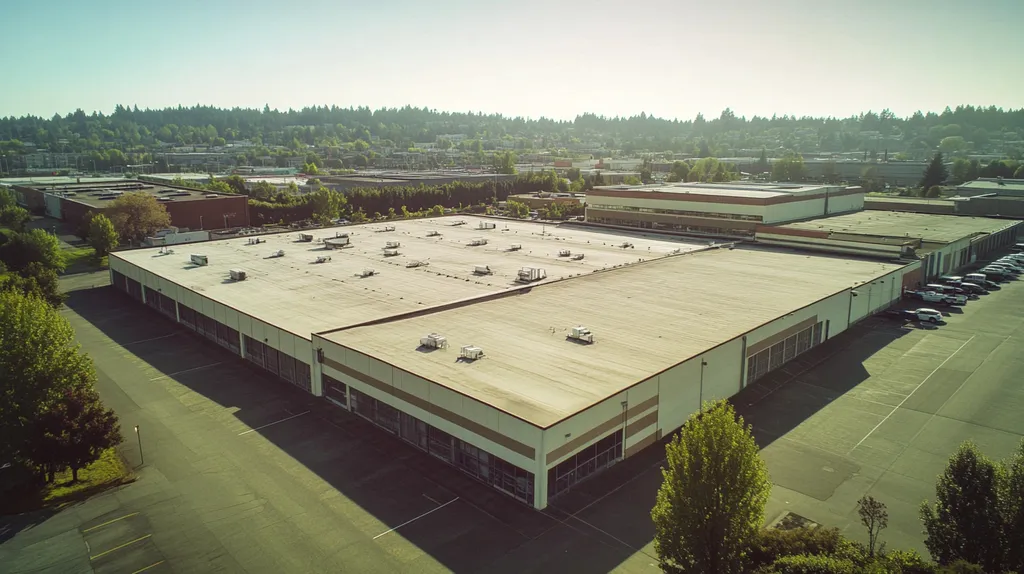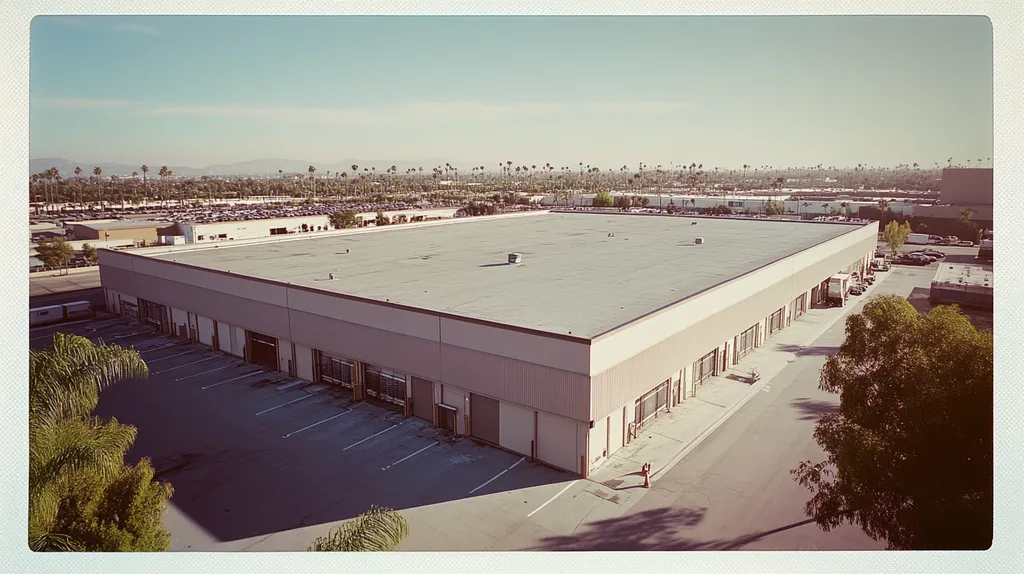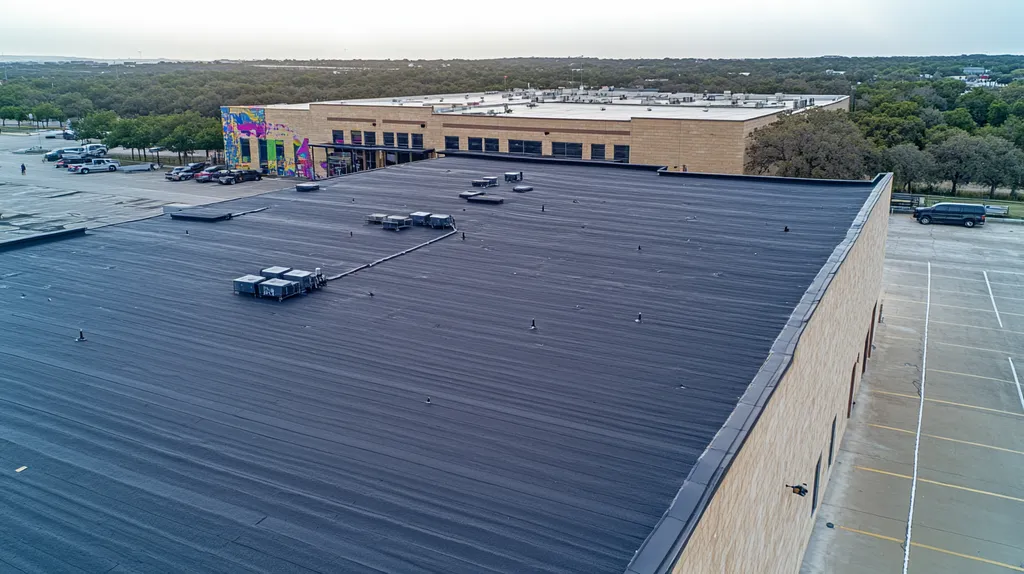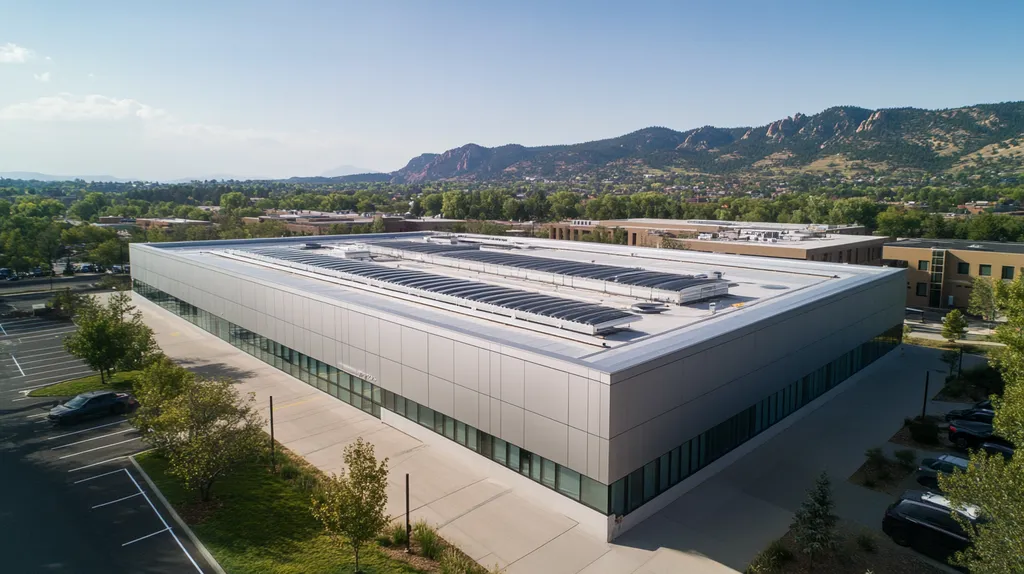The industrial roofing sector faces a crisis, with over 30% of coating applications failing within the first five years due to improper installation and material selection. These failures cost facility owners millions annually in repairs, energy loss, and operational disruptions.
Despite manufacturers’ clear guidelines and extensive research on best practices, widespread misapplication of coatings continues to plague the industry. The rush to implement quick fixes often leads to catastrophic results.
This analysis examines why current coating practices fall short, revealing systemic issues that compromise roof integrity and exploring data-driven solutions for lasting protection.
SECTION 1: CURRENT PRACTICES
The roofing industry is at a critical crossroads, with many commercial properties embracing coatings over existing materials without fully grasping the associated risks. Research shows that improperly applied coatings can accelerate roof failure, resulting in costly repairs and long-term operational disruption. This section dives into the urgent issues plaguing current practices, underscoring the necessity for skilled professionals and meticulous application techniques to protect roofing investments.
Untrained Installers and Their Impact
Hiring untrained installers can severely jeopardize roofing integrity. Many property owners are drawn to low-cost options without adequately vetting the qualifications of their contractors. This lack of expertise often leads to improper application techniques, leaving roofs prone to leaks and failures.
When mistakes occur, the financial burden can escalate rapidly. Not only do repairs become necessary, but businesses also face interruptions that can hurt their bottom line. It is essential to prioritize hiring skilled labor, as it directly influences the durability and performance of roofing systems.
Property owners who rely on unseasoned staff run the risk of receiving subpar workmanship. As incorrect techniques are employed, coatings may fail prematurely, resulting in a frustrating cycle of recurring issues.
In the long run, the use of inexperienced installers undermines the effectiveness of coatings. This negligence has wider implications, potentially affecting the overall safety and functionality of the entire facility.
Inadequate Surface Preparation Methods
Effective surface preparation is the cornerstone of any roofing project, yet many contractors neglect its significance. Applying coatings to inadequately prepared surfaces can result in problematic adhesion. Essential tasks like clearing away dirt, debris, and moisture are vital for ensuring a robust bond between the coating and the base material.
If proper inspections of the existing roofing membrane are skipped, hidden damage could go untreated. Such oversights can entrap moisture beneath the coating, hastening deterioration and increasing the potential for system failure.
Moreover, the quality of surface preparation varies dramatically among contractors. Some may overlook crucial steps like priming or thorough cleaning, leading to uneven coatings that fail to stick as intended. This inconsistency ultimately detracts from the coating’s intended benefits.
These shortcomings in surface preparation not only threaten the longevity of the roof but also lead to escalating maintenance costs and additional damage. Property owners must insist on rigorous surface preparation practices to optimize the performance of their coatings.
Overreliance on Quick Fixes
The allure of quick fixes in roofing is hard to resist, but these solutions often create more problems than they solve. Many property owners are tempted by coatings that promise immediate relief and an extended lifespan for their roofs, yet such fixes may merely conceal deeper issues.
By delaying necessary repairs, short-term fixes often magnify underlying problems. For instance, if a roof has structural issues causing leaks, applying a coating alone will not resolve the core problem. This superficial approach can lead to significantly higher costs over time.
Additionally, quick fixes frequently overlook the complexities inherent in roof systems. A comprehensive maintenance strategy must address all contributing factors rather than offering a temporary cover-up. Coatings should be integral to a larger maintenance philosophy, not just seen as a singular solution.
In conclusion, while coatings can certainly improve a roof’s performance, they are not a cure-all. An increased focus on thorough assessments and necessary repairs is essential for achieving effective and long-lasting roofing systems.
SECTION 2: SYSTEMIC ISSUES
Addressing systemic issues in industrial roof coatings is critical for maintaining long-term building integrity. With an estimated 20% of flat roofs failing prematurely due to improper practices, the stakes are high for property owners and facility managers. Key challenges include selecting the wrong coating, overlooking moisture and insulation issues, and failing to implement regular maintenance protocols. Understanding these pitfalls is crucial for effective decision-making and protecting valuable assets.
Improper Coating Selection and Application
The choice of coating material is fundamental to the performance of an industrial roof. Unfortunately, many property owners fall prey to persuasive sales pitches without thoroughly assessing their roof’s unique needs. This often results in choosing coatings that are mismatched for specific environmental conditions and existing materials.
For instance, while a reflective coating might effectively combat heat in arid climates, it could inadvertently cause condensation issues in more humid areas. Without adequate evaluation of the roof’s substrate, coatings may struggle to adhere properly, resulting in peeling, blistering, or overall failure.
Moreover, subpar application techniques can compound these issues. Factors like insufficient surface preparation or poor temperature control during application can severely compromise the coating’s expected lifespan.
Inadequate selection and application of coatings drastically heighten the risk of roof failure, which not only disrupts business operations but also leads to significant financial burdens.
Neglect of Moisture and Insulation Issues
Moisture management is a critical, yet frequently overlooked, aspect of roof maintenance. In many instances, property owners opt to apply coatings while ignoring underlying moisture issues. Trapped moisture can lead to problematic outcomes such as mold growth, insulation deterioration, and structural damage.
Effective insulation plays a pivotal role in a roof’s overall performance. If insulation issues remain unaddressed, coatings may only provide temporary relief, making them ineffective in the long run. Insufficient insulation can cause energy costs to skyrocket and adversely affect indoor climate conditions.
A prevalent example is the application of coatings over roofs with existing leaks. If these leaks are not properly remedied before coating application, the coating may merely mask the problem rather than resolving it. This creates a misleading sense of security for property owners.
Overlooking moisture and insulation issues can have dire consequences, leading to increased costs and severely impacting a roof’s longevity.
Lack of Regular Maintenance Protocols
Implementing regular maintenance is crucial to prolonging the life of industrial roofs, yet it is often disregarded. Many property owners take a reactive approach, only addressing issues when they surface, which allows for substantial deterioration to accumulate over time.
Without consistent inspections, minor issues can escalate into major, costly problems. Neglecting routine maintenance can result in unnoticed wear on roofing materials and the underlying structure.
Establishing a structured maintenance protocol should involve regular inspections and prompt repairs whenever issues are detected. This proactive strategy is essential for ensuring roof integrity and functionality.
Failure to adopt regular maintenance practices not only jeopardizes roof performance but also inflates operational costs in the long run due to unplanned repairs and replacements.
SECTION 3: MISSED OPPORTUNITIES
When applying coatings to existing industrial roofs, property owners and facility managers must navigate critical pitfalls that threaten the longevity and effectiveness of their investments. Overlooking manufacturer guidelines, neglecting structural problems, and failing to appreciate long-term cost benefits are common mistakes. These oversights not only impair roofing performance but can also result in significant financial consequences.
Ignoring Manufacturer Guidelines
Each roofing system is accompanied by specific manufacturer guidelines that detail the correct application methods and conditions. Disregarding these recommendations can lead to dire outcomes. For example, attempting to apply a coating in unsuitable weather can hinder adhesion, ultimately resulting in coating failure.
Manufacturers provide crucial information regarding surface preparation, product compatibility, and layering techniques. Neglecting these requirements may compromise the coating’s protective capabilities, leading to leaks that escalate repair costs and disrupt operations.
Failing to follow these guidelines can also void warranties, leaving property owners financially exposed. Therefore, adhering strictly to manufacturer specifications is essential for ensuring roof coatings function as intended.
In the long run, decision-makers must recognize the importance of respecting these guidelines to prevent unexpected expenses and roof failures.
Failure to Address Underlying Structural Problems
Applying coatings to existing roofing materials may seem like a quick solution, but it can mask underlying structural issues. Property owners sometimes opt for this approach without thoroughly evaluating their roof’s condition. If structural problems go unresolved, they may lead to more severe failures later.
For instance, a roof with areas of deteriorating insulation or standing water might appear satisfactory on the surface. However, without addressing these hidden issues first, coatings can entrap moisture and exacerbate damage.
Neglecting comprehensive assessments and repairs before applying coatings can lead to increased maintenance needs. Ultimately, this oversight may result in significant structural failures, potentially requiring costly renovations or complete roof replacements.
Tackling underlying structural issues not only enhances the performance of the applied coatings but also minimizes unexpected future costs.
Overlooking Long-Term Cost Benefits
Often, property owners focus solely on the initial costs associated with industrial roof coatings, which can lead to missed long-term savings. This narrow perspective ignores the potential for reduced energy expenses and extended roof life through the right investments.
Research indicates that reflective coatings can lower cooling costs by as much as 30%. This decrease in energy demand translates to substantial financial savings over time.
Moreover, a well-implemented coating enhances waterproofing, significantly decreasing maintenance and repair costs. The expenses related to leaks, moisture damage, and operational disruptions can far surpass the initial outlay for quality coatings.
By acknowledging the long-term advantages of investing in superior coatings, facility managers can make informed choices that bolster their roofs’ durability and overall affordability.
SECTION 4: ROOT CAUSES
The application of coatings over existing materials on industrial roofs presents not just opportunities, but significant risks. Alarmingly, estimates suggest that up to 30% of coating projects fail prematurely due to improper preparation and application techniques. To safeguard investments and ensure roofing effectiveness, it is essential for property owners and facility managers to understand the root causes of these failures. This section delves into three critical areas: inexperienced crews, low-quality products, and environmental factors affecting performance.
Inexperienced Crews and Training Gaps
The proficiency of the crew executing roof coatings is a key determinant of project success. Many roofing companies resort to hiring untrained workers, lacking the expertise needed for proper application. This oversight often results in methods that do not align with manufacturers’ specifications.
Failing to adhere to established industry standards can produce issues such as bubbling, peeling, and reduced adhesion. Furthermore, inadequately trained crews may neglect essential surface preparation steps that are crucial for forming a strong bond between the coating and the substrate.
The lack of ongoing training relegates crews to outdated practices, limiting their awareness of recent advancements in coating technologies. This gap restricts their ability to select the most appropriate products for specific roofing systems and conditions.
Ultimately, the hiring of inexperienced crews threatens not only the durability of the roof but also the financial stability of businesses, leading to costly repairs and downtime.
Low-Quality Coating Products and Manufacturers
The available coating products on the market vary significantly in quality, and unfortunately, some lower-grade options do not meet necessary durability and performance standards. Utilizing these subpar products can undermine the long-term effectiveness of coatings, exposing facilities to heightened risks of roof failure.
Some manufacturers prioritize profit over quality, offering coatings that promise ease of application but fall short on longevity. When such products are applied, they can lead to early degradation, necessitating costly reapplication or damage control measures.
Additionally, a lack of rigorous testing means that property owners may unknowingly invest in inferior coatings, amplifying the risk of premature failures. This situation accentuates the critical need for selecting reliable manufacturers who adhere to industry benchmarks.
In the end, the use of low-quality coating products can have dire repercussions, leading to extended moisture exposure and leaks that jeopardize the structural integrity of the building.
Environmental Factors and Climate Considerations
Environmental considerations significantly influence the success of roof coatings. Factors such as temperature fluctuations, humidity levels, and UV exposure can dramatically affect coating performance. Neglecting these critical elements can result in early failure of the coatings.
For example, extreme weather conditions can hinder proper curing of coatings applied at the wrong times. In regions with intense sunlight, UV-resistant coatings are essential to ensure lasting effectiveness.
Furthermore, each geographic locale presents unique climate challenges that must be taken into account when selecting a coating solution. Disregarding local conditions can lead to coatings that are unsuited for their environment, causing premature cracking or delamination.
Ultimately, failing to address environmental factors can incur substantial financial losses due to frequent repairs and replacements, underscoring the need for tailored roofing solutions that reflect local climate realities.
DATA DRIVEN EVIDENCE
Applying coatings over existing materials on industrial roofs is a decision fraught with risks, and the data reflects the urgency of this reality. Research indicates that nearly 30% of roofing coatings fail within five years, resulting in significant repair costs and increased operational downtime. Understanding these statistics is vital for property owners and facility managers who must navigate ongoing maintenance challenges. The following subsections will examine failure rates, review case studies, and illuminate the economic impact of poor coating practices.
Statistics on Coating Failure Rates
Recent industry reports unveil concerning statistics about coating failures that demand attention. A study found that approximately 25% of roof coating projects miss their intended lifespan due to inadequate application techniques or insufficient surface preparation. Alarmingly, over 40% of property owners reported experiencing leaks within the first three years following a coating application.
Such statistics highlight the critical need for thorough pre-application assessments. When evaluations are skipped, coatings are frequently applied over compromised surfaces, increasing the likelihood of failure. The implications for business operations are profound and should not be overlooked.
Furthermore, warranty claims data reveals that coatings applied without proper adhesion or surface cleaning led to a 50% increase in warranty disputes. These numbers strongly emphasize the importance of adhering to best practices during coating application.
Ultimately, awareness of these failure rates is essential for informed roofing decisions in the industry. The data is clear: meticulous planning and consideration are integral to the successful coating of industrial roofs.
Case Studies of Successful and Failed Coatings
Several case studies vividly showcase the contrast between successful and failed coating applications. In one notable example, a large manufacturing facility chose a coating system previously proven effective in similar environments. With rigorous surface preparation and testing to ensure optimal adhesion, this facility has enjoyed nearly a decade of maintenance-free operation since its coating application.
On the other hand, another facility opted for a coating without conducting necessary evaluations of its substrate. Within two years, they encountered severe coating failure, leading to substantial water damage and repair costs exceeding $100,000. This stark difference emphasizes just how crucial proper preparation is for coating success.
Additionally, long-term effects are evident in these case studies. Successful applications not only extend the roof’s lifespan but also enhance energy efficiency, subsequently lowering utility costs. Conversely, facilities with failed coatings experience mounting overhead costs due to persistent repairs and operational disruptions.
These examples elucidate that a thorough understanding of existing roof conditions can significantly influence the outcome of coating projects. Investment in careful evaluation and preparation pays dividends, while neglecting these steps can result in costly setbacks.
Economic Impact of Poor Coating Practices
The economic ramifications of coating failures extend far beyond immediate repair costs. A failed coating often triggers manufacturing delays, dampening productivity and impacting revenue streams. Research estimates that facilities grappling with roofing issues can suffer losses nearing $50,000 per week due to diminished output.
Moreover, the expense of installing a new roof following coating failure can significantly exceed the initial cost of application. Property owners may find themselves spending two to three times more than the original coating price just to restore their roofs.
In addition to direct financial consequences, inadequate coating practices can tarnish a company’s reputation. Clients may be reluctant to partner with facilities plagued by ongoing maintenance challenges, adversely affecting contracts and new business prospects.
Given these economic considerations, it is essential for property owners and facility managers to assess the long-term implications of their coating decisions critically. Prioritizing quality in assessment and application can yield impressive savings and enhance overall operational efficiency.
SECTION 6: ALTERNATIVE SOLUTIONS
The need for effective alternatives in industrial roof coatings is pressing. With statistics showing that over 50% of coating applications fail prematurely, property owners face not only significant financial burdens but also interruptions to their operations. Emphasizing professional installation standards, exploring advanced materials, and developing comprehensive maintenance plans can lead to more durable roofing solutions. These alternatives not only rectify existing weaknesses but also establish a foundation for resilient roofing strategies in the future.
Professional Installation and Training Standards
Professional installation serves as the backbone of successful industrial roofing projects. Without stringent training and certification, even the highest-quality materials may underperform, costing property owners significantly in repairs and replacements.
Many coatings fail simply because inexperienced installers overlook essential application processes. Ensuring that contractors receive thorough training in the latest installation techniques helps reduce these risks, ultimately maximizing the roof’s lifespan.
Establishing standardized training protocols can elevate industry standards as a whole. By encouraging best practices, property owners can ensure their roofs are installed correctly, promoting enhanced performance and durability.
Industry associations should champion training programs and certifications that bolster the expertise of installers. This effort can cultivate a knowledgeable workforce ready to tackle today’s roofing challenges effectively.
Advanced Coating Technologies and Materials
Recent advancements in coating technologies are transforming the capabilities of industrial roofing. Innovative materials now provide enhanced UV resistance, thermal insulation, and overall durability, allowing coatings to perform better even in harsh environmental conditions.
Many of these newer coatings not only extend the lifespan of roofs but also boost energy efficiency by reflecting sunlight. This reduction in energy costs can offer a return on investment that more traditional coatings simply cannot deliver.
Moreover, the introduction of eco-friendly coatings aligns with the increasing demand for sustainable building practices. These products often rely on less harmful chemicals, fostering a healthier environment while maintaining effective performance.
Investing in advanced technologies equips facility managers with a competitive advantage in optimizing their roofing strategies. A well-informed selection of materials can prevent future complications and significantly enhance building performance.
Comprehensive Maintenance and Inspection Plans
Any coating will require regular maintenance and inspections to prolong its effectiveness. Property owners must proactively implement detailed maintenance strategies to ensure roofs remain in peak condition.
Regular inspections help identify early signs of wear and tear, enabling timely interventions. This proactive approach not only extends coating longevity but also protects the integrity of the underlying roof structure.
A robust maintenance plan should include scheduling routine cleaning, minor repairs, and touch-ups to coatings. Investing in consistent upkeep can significantly reduce costs associated with extensive repairs or premature replacements.
Property owners should consider collaborating with roofing professionals who offer comprehensive maintenance plans. This partnership ensures that roofs are expertly monitored and maintained, resulting in minimized risks of unexpected failures.
Moving Forward
The industrial roofing sector stands at a critical juncture, with coating failures costing facility owners over $500 million annually in repairs, replacements, and operational disruptions.
Current widespread practices of improper coating applications threaten not just individual buildings, but the credibility of an entire industry.
The evidence is clear: without immediate adoption of professional installation standards, advanced coating technologies, and comprehensive maintenance protocols, failure rates will continue to climb beyond the current 30% threshold.
Only through rigorous training programs, careful material selection, and systematic inspection plans can facility owners protect their substantial roofing investments and ensure long-term building integrity.
The future of industrial roof coatings depends on raising industry standards and embracing data-driven solutions that prioritize quality over quick fixes.
FREQUENTLY ASKED QUESTIONS
Q. What are the risks of using coatings on commercial roofs?
A. Many commercial properties face significant risks, such as accelerated roof failure and costly repairs. Improperly applied coatings can lead to leaks and operational disruptions, making it crucial for property owners to hire skilled professionals to ensure the right application techniques are followed.
Q. How does improper surface preparation affect industrial roofs?
A. Inadequate surface preparation can severely compromise adhesion and longevity of coatings. Critical tasks like thorough cleaning, priming, and inspecting the existing roofing membrane are essential to ensure a robust bond, preventing moisture entrapment that leads to deterioration and escalating maintenance costs.
Q. What are the common mistakes when applying coatings on industrial roofs?
A. Frequently overlooked pitfalls include ignoring manufacturer guidelines and not addressing underlying structural issues. These mistakes can lead to premature failures, requiring costly repairs and disrupting daily operations. A comprehensive assessment is crucial for ensuring effective coating applications and long-term roof health.
Q. How can inexperienced crews impact industrial roofing projects?
A. Inexperienced crews often miss vital application techniques and quality standards, leading to significant risks. Their lack of training can result in bubbling, peeling, and reduced adhesion, jeopardizing the durability of the coating and potentially causing costly repairs that burden businesses financially.
Q. What are the economic impacts of poor coating practices?
A. Poor coating practices can lead to unexpected expenses, including repair costs and lost productivity. Facilities may incur losses of up to $50,000 weekly due to operational disruptions, reflecting how choosing low-quality coatings or improper application methods can severely impact a business’s bottom line.
Q. What alternatives exist for industrial roof coatings?
A. Exploring options like professional installation practices, advanced materials, and robust maintenance plans can enhance roof durability. Investing in high-quality coatings and rigorous training for contractors helps address existing weaknesses and lays a strong foundation for resilient roofing strategies in the future.
Q. How do environmental factors affect the efficacy of coating applications?
A. Environmental factors such as temperature fluctuations and humidity levels play a pivotal role in coating performance. Neglecting these conditions can lead to improper curing or premature coating failures. Selecting solutions that account for local climate challenges is crucial for ensuring long-lasting roofing effectiveness.

